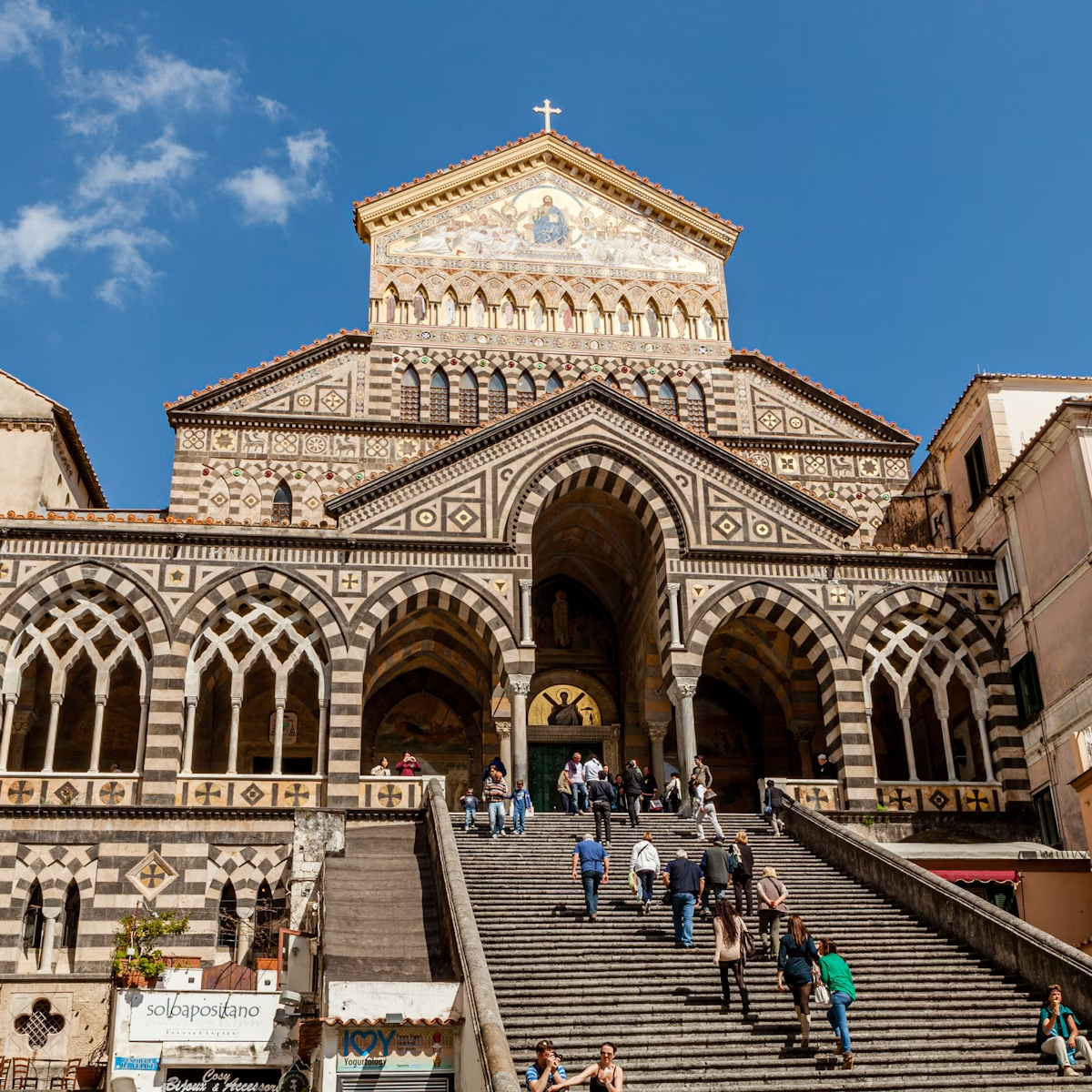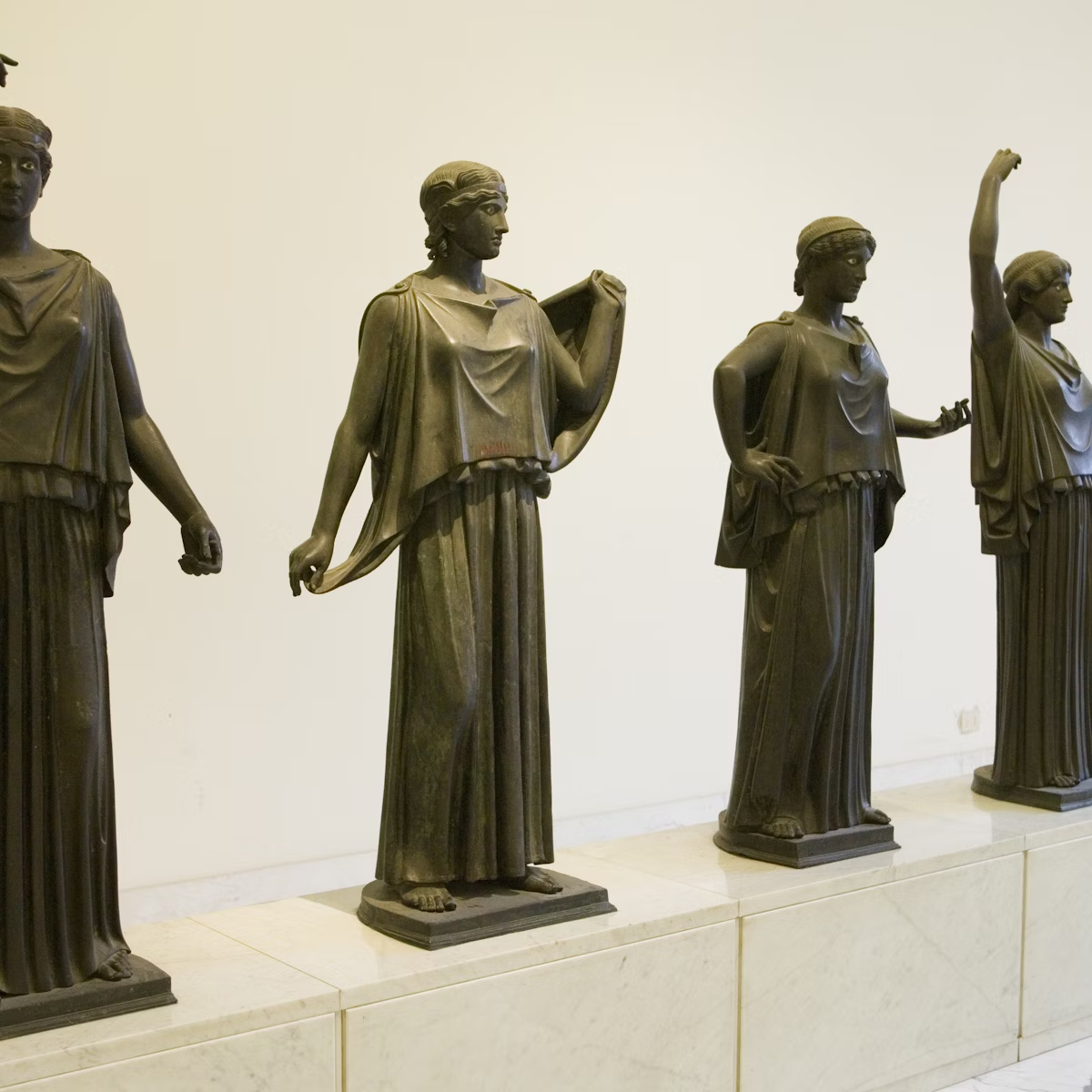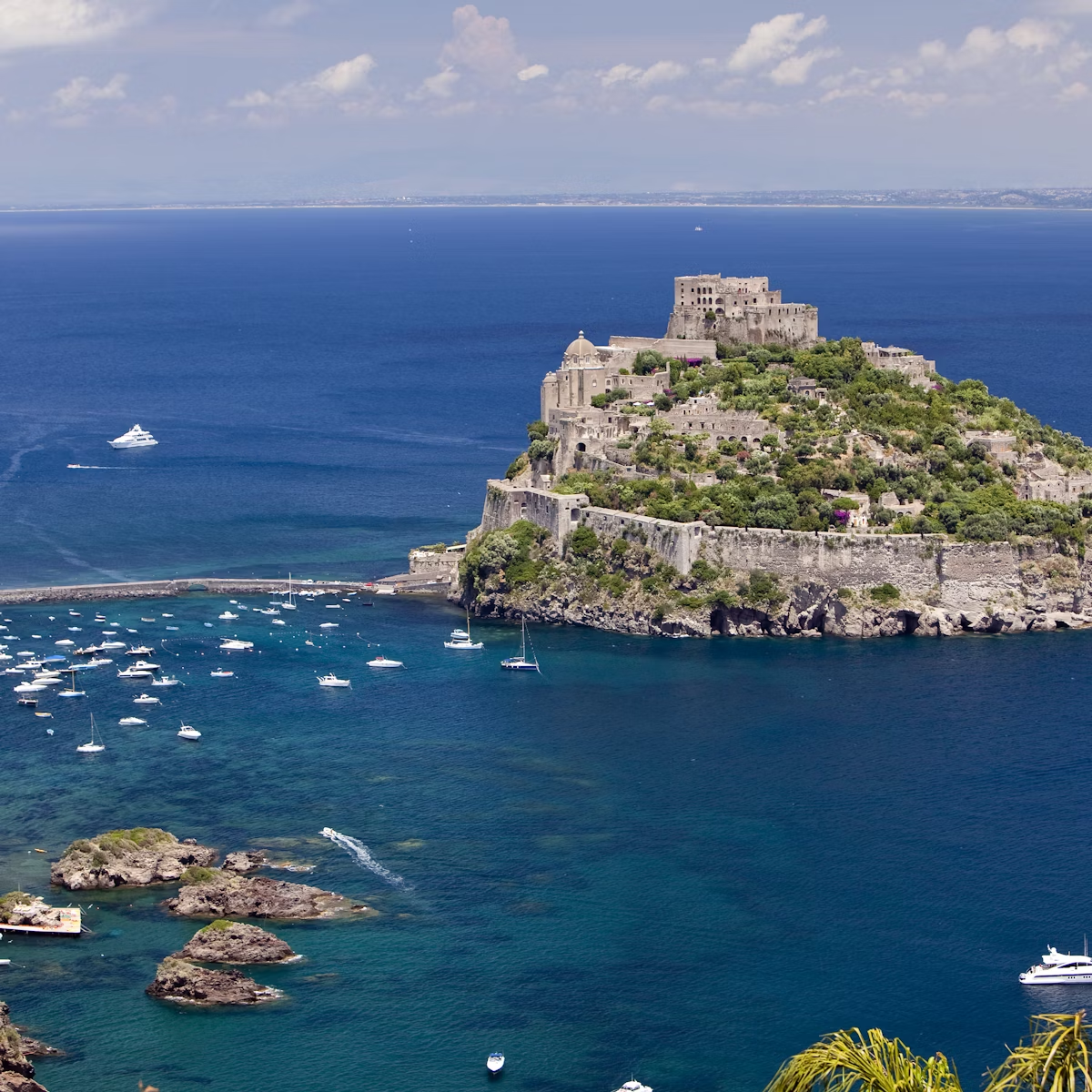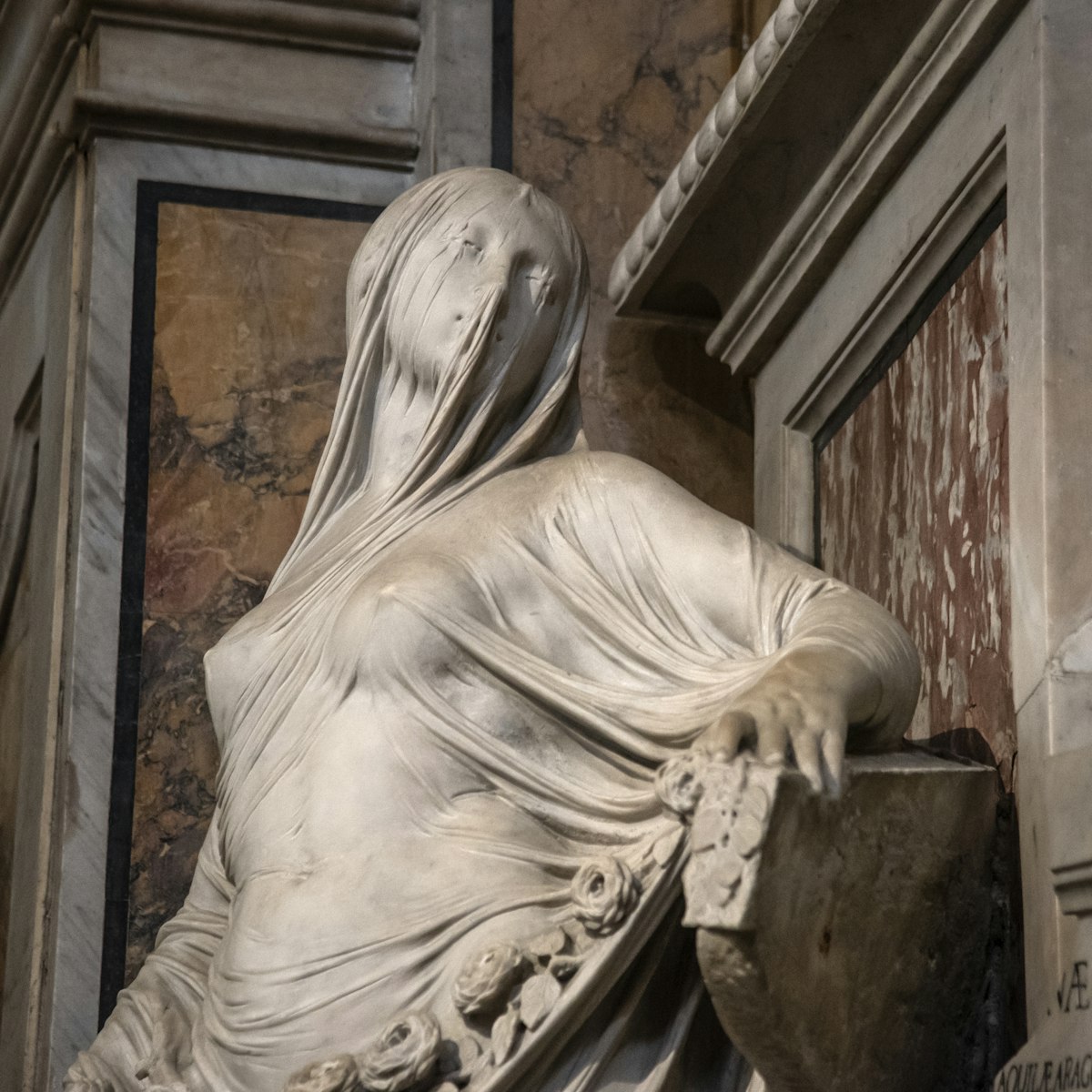Originally in Palazzo Zevallos Stigliano, the Gallerie d'Italia can now be found in the nearby Banco di Napoli building, which houses a compact yet stunning collection of Neapolitan and Italian art spanning the 17th to early 20th centuries. The star attraction is Caravaggio's mesmerising swansong, The Martyrdom of St Ursula (1610). Completed weeks before the artist's lonely death, the painting depicts a vengeful king of the Huns piercing the heart of his unwilling virgin-bride-to-be, Ursula.
Positioned behind the dying martyr is a haunted Caravaggio, an eerie premonition of his own impending fate. The tumultuous history of both the artist and the painting is documented in the free and highly informative tablet audio guide.
Caravaggio's masterpiece is one of around 120 works on display in the palazzo's sumptuous rooms. Among the numerous standouts are Luca Giordano's robust The Rape of Helen, a graphic Judith Beheads Holofernes attributed to Louis Finson, Francesco Solimena's Hagar and Ishmael in the Desert Confronted by the Angel and a series of bronze and terracotta sculptures by Vincenzo Gemito.
A fine collection of landscape paintings includes Gaspar van Wittel's View of Naples with the District of Chiaia from Pizzofalcone and his View of Naples with Largo di Palazzo, both of which offer a fascinating depiction of the city in the early 18th century. The latter painting – which depicts what is now Piazza del Plebiscito – includes the triple-arched Fontana dell'Immacolatella. Designed by Michelangelo Naccherini and Pietro Bernini in 1601, the fountain is now located at the corner of Via Partenope and Via Nazario Sauro, beside Borgo Marinaro. Gaspar van Wittel was the father of celebrated Neapolitan architect Luigi Vanvitelli.








